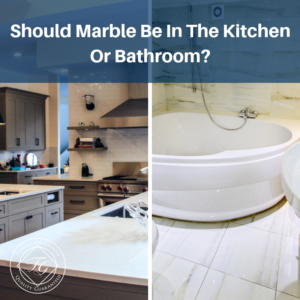
Even thinking about your bathroom renovation can seem overwhelming. You’ll need to decide on your budget, choose the product types that will work best and decide if you’ll need to make any changes to the room’s layout. After all of that, you’ll then need to choose the contractor you’ll need to complete the job.
In order to help your bathroom renovation to go smoothly, it’s best if you start planning early.
Here is what you should do beginning about six months before the start of your planned renovation up through its completion.
Six months before your renovation
1. Start looking around for inspiration. Good starting places include catalogs and magazines. You can tear out the pages and make a collage or scrapbook with the things you like. It might be smart to include Post-It notes so you can list what you like about each picture. After you have collected a number of photos, examine them to look for what they have in common with each other. This will make choosing your fixtures and tiles a lot easier.
2. Start asking your friends and acquaintances for their recommendations about contractors. It’s not necessary to call contractors this far in advance, but gathering recommendations from your friends, acquaintances, home improvement stores and professional organizations can help you collect a list of names you can call when you are nearing your target date.
3. Start planning the layout of your new bathroom. You’ll want to consider what will work with your bathroom’s current layout and what will not. This is a good time to decide if you will need to make changes to it to accommodate your storage and other needs. If you think you’ll want to move your tub, sink or toilet, you’ll need to determine whether plumbing work will be needed. Of all of the different items you might move, the toilet is normally the priciest, so keep that in mind.
Three months before your renovation
1. Now is the time to finalize your project’s budget. The average person spends around $11,000 when they renovate their bathroom, according to the National Kitchen and Bath Association. After you have determined what you can afford, you should plan to spend around 66 percent of the total on labor. This will let you understand what you will be able to dedicate to your tile, fixtures and any extras you want. If you do not have much wiggle room in your budget, then look for more affordable substitutions you can use in place of pricier ones.
2. Choose your contractor. Now is the time to choose your contractor. You’ll want to ask a few different ones to look at the drawings you have made. Ask them if your plans are possible for your bathroom. Collect estimates and check the contractors’ references thoroughly. After you have chosen your contractor, it will be time for you to sign your contract with them for the job. Ask the contractor to tell you the starting date for the project and to commit to it. He or she should also make a project timeline that informs you when he or she will need different materials. In most cases, a bathroom renovation can be expected to take about six weeks. You should never let any work start before you have a signed contract in place. You’ll also want to determine the payment schedule with your contractor. Normally, people pay one-third of the total up front, another third halfway through the job and the final third when the project is completed. If your home only has one full bathroom, you’ll also want to ask how long your home will have no shower so you can plan ahead.
Two months before your renovation
1. Now it’s time to buy your fixtures and tile. Hand-painted tiles can take as long as 12 weeks to come in while others are able to be filled in two or three days. To be safe, make certain you order your tiles at least eight weeks ahead of time. High-end fixtures can take up to eight weeks to arrive, so purchase them early as well. You’ll want to also check with the manufacturer of any custom-built cabinets to make certain you’ll have them when your contractor will need them. Finally, make certain you order your light fixtures well in advance, too.
One month before your renovation
1. Ready your bathroom for your contractor. You’ll want to clean out your bathroom’s closets and cabinets. You’ll also want to set up an area where you will be able to get ready where the contractors won’t see you.
2. Buy the accessories for your bathroom. You can have fun choosing the items such as the soap dishes, towel bars or hooks and toilet paper holders. If you want to purchase new towels to match a different color scheme, buy those, too.
3. Choose your paint. It’s hard to choose the color you’ll use until the flooring is installed and the tile is already placed.
4. After the project has started, you’ll want to check in often with your contractor. It’s a good idea to ask him or her each day what he or she will do that day. If you have any concerns, that is also a good time to mention them. Always make certain you communicate freely and that he or she knows how to get inside if you’re not home. Make sure to keep your children or pets away from where the contractor is working.
Final days of the renovation
1. Flexibility is key at this point. If it looks as if your project might run over by a few days, don’t let it frustrate you too much.
2. Conduct an inspection of your contractor’s work. If you see anything that needs to be fixed, tell your contractor before he or she completes the job.
3. Celebrate when it’s all over. When the job is finally done, put your toiletries where you want them, hang your towels and sit back and relax.






